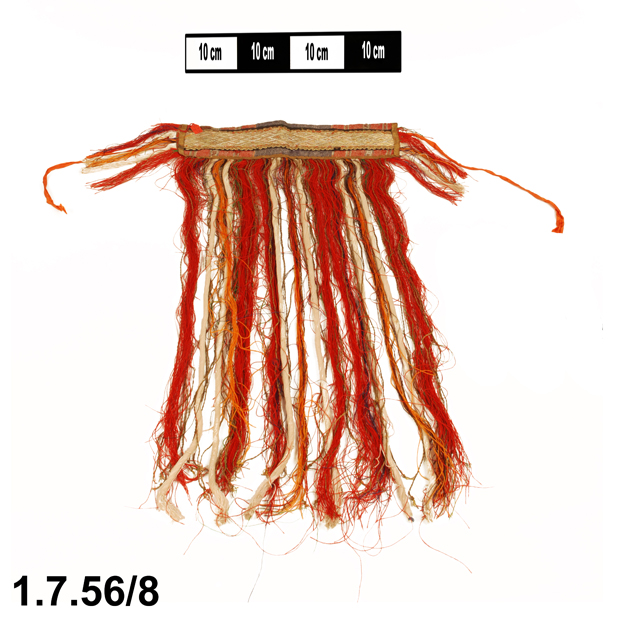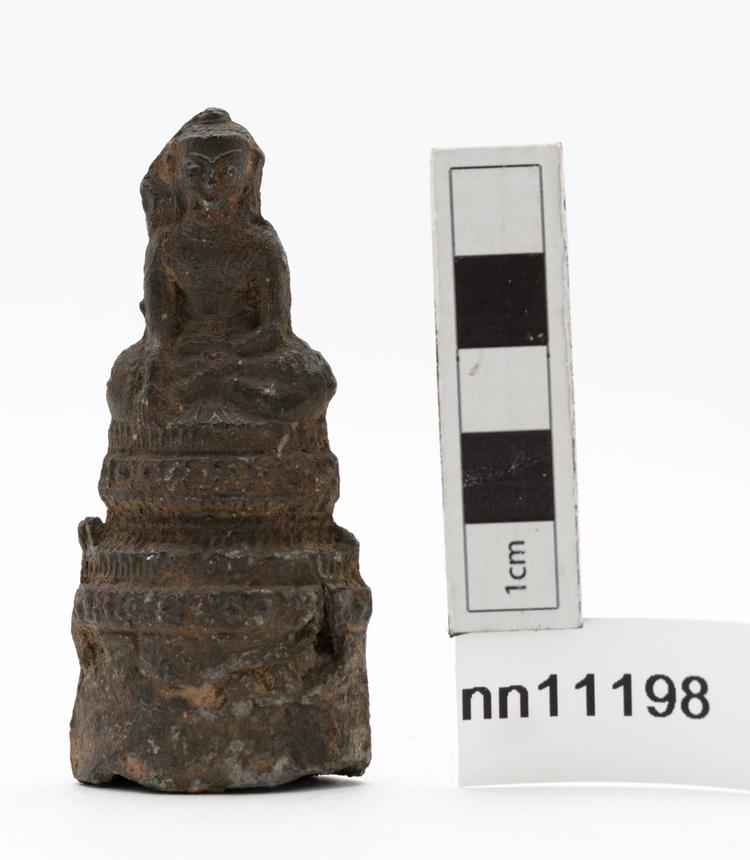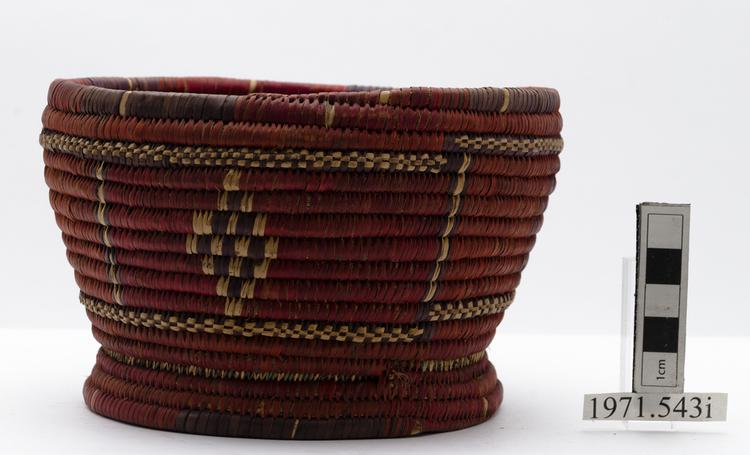Ceremonial headband. Pormajini in tiwi language.
Worn during Pukamani funeral ceremonies. Worn by close family members of the deceased during Pukamani funeral ceremonies. ‘Performance of this ceremony ensures that the spirit of the dead person goes from the living world into the spirit world. The Pukamani is a public ceremony and provides a forum for artistic expression through song, dance, sculpture and body painting. The ceremony occurs months after the deceased has been buried. The Tiwi believe that the dead person's existence in the living world is not finished until the completion of the ceremony. The final Pukamani is the climax of a series of ceremonies that traditionally continued for many months after the burial of the dead. There is usually one iliana (funeral ceremony) at the time of death and then many months later the final Pukamani. The ceremony culminates in the erection of monumental carved and decorated Pukamani poles which take many months to prepare and are impressive gifts to placate the spirit of the dead. These poles are placed around the burial site during the ceremony. They symbolise the status and prestige of the deceased. Participants in the ceremony are painted with natural ochres in many different designs, transforming the dancers and providing protection against recognition by the spirit of the deceased. Those participants closely related to the deceased wear decorated armbands (pamajini) during the performance. Pamajini are woven from the leaves of the pandanus or screw palm and are decorated with natural ochres and the feathers of the white cockatoo. The white cockatoo's association with the Pukamani ceremony extends beyond the use of its feathers for headbands and armbands. It is believed to keep a sentinel eye on wayward spirits lost on route to the island of the dead. During all ceremonies a series of dances (yoi) are performed






